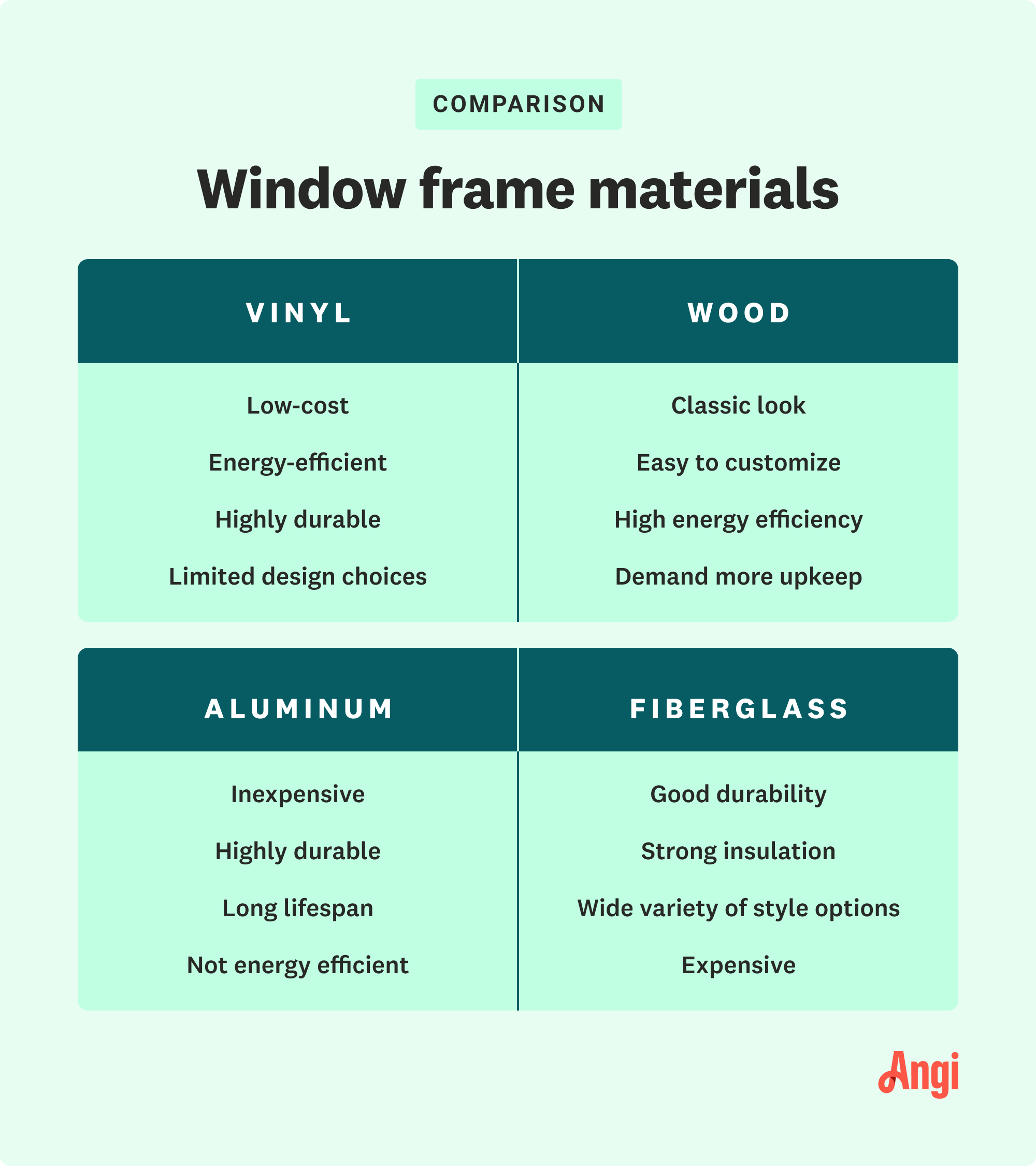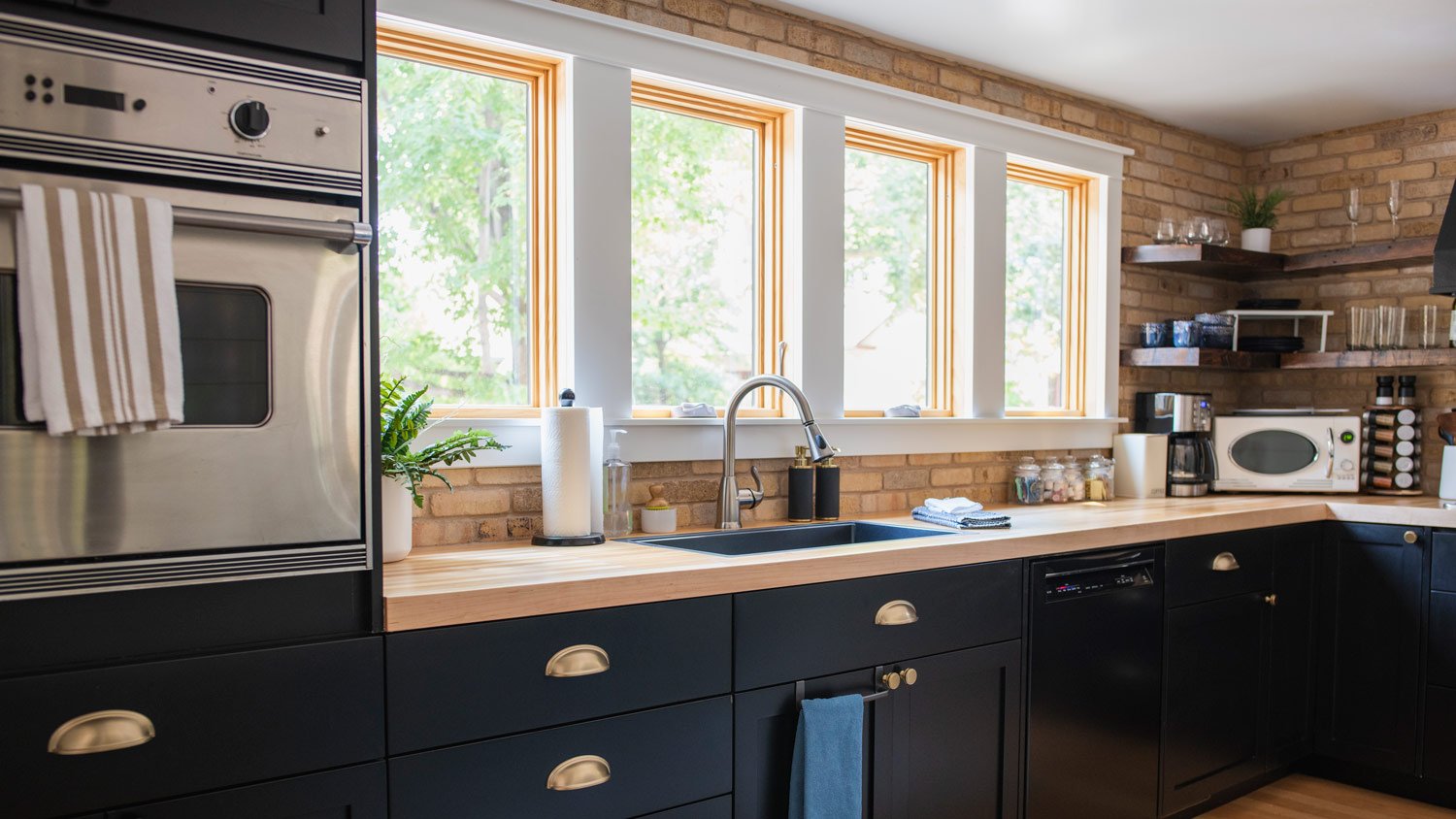14 Things to Consider Before Buying Windows
Consider this your window into buying windows


More intricate windows, like bay or bow windows, cost more than basic single- or double-hung windows.
Spending more upfront on energy-efficient windows could save you money in the long run.
There may be local building codes that restrict what windows you can install.
Consider where your home sits, as you may not want to add an elaborate window in an area that gets little to no sunlight.
Buying windows for the first time or getting replacement windows can be stressful. Not only will your decision play a major role in your home’s appearance and the amount of natural light that comes in, but it will also have implications for everything from security to housework to your energy bill. There’s a lot to keep in mind when buying materials or making a plan with a local window company. Instead of getting lost in the complex details of buying windows, get a handle on the most important things to keep in mind with our comprehensive list of considerations.
1. Budget
With an elaborate project like window installation or replacement, it’s crucial to figure out how much you’re willing to spend early on in the process. There are quite a few variables that determine what your final bill will be, like the type of window you’re buying, the cost of living in your area, what type of siding your home has, and the frame material.
Don’t get too attached to a particular style or material until you’re sure that your wallet can accommodate it. If you’re doing a large job, you should consult a window contractor early on, as they can help you figure out what window types and materials will work within your budget.
Below are the average costs for new windows or the cost to replace windows by style per window:
Bay window: $900 to $7,100
Bow window: $1,500 to $6,500
Casement window: $150 to $1,000
Double-hung window: $150 to $650
Energy-efficient window: $120 to $1,500
Picture window: $65 to $700
Single-hung window: $100 to $400
Storm window: $90 to $400
2. Energy Efficiency
Windows don’t just let light into your home. They also let hot and cool air out, potentially driving up your energy bills and creating unnecessary waste. With every choice you make in your window installation journey, you weigh various other factors against energy loss.
Fortunately, technology has come a long way in recent decades, offering a wider range of safe, stylish, and energy-efficient window options. Energy efficiency is also an important consideration as you set your budget since there are many features you might include that could add to the initial sticker price. But ultimately, energy-efficient windows save you money by reducing your electric bill.
There are two key measures to understand when comparing the energy efficiency of different windows:
U-factor: The U-factor indicates the thermal conductivity of your window. In other words, it indicates how much hot air escapes when it’s cold outside and vice-versa. The scale generally ranges from 0.2 to 1.25. The lower the number, the better the window insulates your home.
Solar heat gain coefficient (SHGC): SHGC quantifies the amount of solar energy the window lets in. You may opt for a window with a higher SHGC if you want to let the sun heat up your home in the winter or a lower SHGC if maintaining cool indoor temperatures in a hot climate is your priority.
3. Your Home’s Architecture

Your home’s architecture and the surrounding landscaping play a key role in the way your windows look and function once installed.
You should also consider where the sun rises and sets over your home. In parts of the house that get more direct sunlight, you may want to spring for additional UV protection or opt for a smaller window. For areas with less-than-ideal views or those that don’t receive much light at all, it doesn’t make sense to pay for an elaborate picture window.
4. Frame Materials
Window frames come in a range of different materials, each offering advantages and disadvantages when it comes to cost, maintenance, appearance, and insulation. The most common choices include vinyl, wood, aluminum, and fiberglass.

Those aren’t the only options, however. Composite and wood-clad frames, for example, have become more widely available in recent years. There are also other factors that may influence your decision, so fully research the different window frame types before replacing or installing yours.
5. Safety
It’s easy to forget that windows can pose a variety of safety risks. If you have young children or are planning to have some soon, consider installing windows that do not open or are double-hung and open only from the top. This is especially important if you have more than one story in your home.
For windows on lower floors, consider what kind of protection the windows afford against break-ins, whether through their own locking mechanisms or with the addition of security bars. You can never be too cautious when it comes to window safety, as there’s so much to consider.
6. Number of Panes
When buying windows, you need to decide how many panes of glass you want. Though single-pane is an option, such windows are increasingly unpopular because they shatter easily and let heat escape. Double-pane windows are the standard choice because they provide energy efficiency and comfort through the extra pane and the gas that usually fills the gap between the two, which offers additional insulation.
If you have trouble maintaining your home’s temperature or live in a particularly loud area, you can also spring for triple-pane glass. However, the hefty price tag rules out this option for most people without such needs.
7. Glazing
You can opt for glass with low-emissivity (low-E) coating when buying windows, which allows light in while cutting down on heat conductivity, meaning less cold air escapes in the summer and less warm air escapes in the winter. There are further glazing options for those focused on limiting noise, people who want additional safety in case of breakage, and those who want more options for customizing the glass’s appearance.
8. Design
There is a nearly endless array of distinct window styles to suit different functions and tastes. You can even opt for customized windows if you have a really specific end goal in mind. Here are some of the most common window designs that you might consider when buying windows:
Double-hung: Far and away the most prevalent window design since the 1980s, double-hung windows feature two operable sashes, allowing you to tilt the window open at both the bottom and top.
Single-hung: For many years, single-hung windows were the most common window type in homes. They have one sash to open the bottom half of the window, but the top remains inoperable.
Sliding windows: Sliding windows consist of one or more panels that move horizontally.
Hopper windows and awning windows: Popular in basements, hopper windows have a hinge at the bottom and open downward and inward. Awning windows, popular for windows on higher stories, invert this, with the hinge at the top.
Folding windows: This style allows you to (you guessed it) fold down the window to get fresh air. The cost to install folding windows runs between $500 and $3,000.
That’s just the tip of the iceberg, though, so make sure to explore the full range of window types before you make a decision.
9. Installation
The quality of your new windows won’t make a difference if they’re not installed properly—and there’s a lot of room for error. If you’re planning a DIY project, make sure you understand all the details of the product you’re installing and be honest with yourself about your capabilities. If any part of you is hesitant, hire a pro to install your windows instead.
When hiring a contractor, do thorough research and ask relevant questions. If, for example, you spent a lot of money to buy windows with pre-installation waterproofing, tell your pro before they begin the installation. If the contractor doesn’t know this, they may plan to use expanding foam or sealants in the installation, which could undermine the protection you paid for.
10. Warranty Protection
Most window manufacturers offer warranties for their products; however, coverage details vary, so it’s important to understand how you will and won’t be protected. Some “lifetime” warranties only cover the three to four years following installation, while others are good for 15 or even 25 years.
Almost all warranties cover the glass, and some cover problems stemming from poor installation, but very few warranties will cover replacement or reimbursement for hardware. Additionally, understand whether or not the warranty is transferable in case you sell your home since it could end up influencing the resale value.
11. Cleaning and Maintenance
Before getting swept up in the beauty a floor-to-ceiling window adds to your home, think carefully about the ongoing maintenance your new feature requires. Are you set up to clean windows in your home as frequently as necessary to keep them beautiful? Or, if not, to pay someone else to do it?
Take into account the logistics of, for example, trying to keep a skylight clean consistently. You may have to get a ladder and make sure you’re following a ton of safety precautions just for a standard cleaning. Think about if the overall time and effort you’d put into regular cleaning and maintenance are worth the aesthetic you’re going for with the window you choose.
Additionally, different types of frames are likely to need different levels of maintenance; steel and wood, for example, need constant upkeep compared to vinyl or fiberglass.
12. Ease of Use
Ease of use is another important factor that can be easy to overlook as you’re shopping around. How easy will it be to open and close that elaborate design as the weather changes? Do you live in a climate where your winter heating will cause your wood frame to expand, making it harder to adjust in other months? Those sliding windows may bring the most light into the kitchen, but they may pose a problem if you need to ventilate the room since they don’t open all the way.
13. Local Building Codes
As with any home improvement project, your options are governed not only by the market but also by the building codes in your area. If you’re doing the installation yourself or haven’t yet discussed your plans with a contractor, make sure you have a sense of what your local government does and does not allow.
14. Buying From Retailers vs. Window Pros
Windows require extremely precise measurements to fit correctly. Most window pros will decline a job if you purchase your windows from a big box store because it’s unlikely that the windows will fit. It’s best to have a pro come to your home to take exact measurements and order the windows themselves.





- When to Replace Windows: 10 Signs That It’s Time to Start Shopping
- 10 Tips on How to Make Windows More Energy Efficient
- 6 Tips for Choosing the Right Replacement Windows for Your Home
- 15 Types of Windows and How to Choose the Right Ones
- How to Choose the Best Replacement Windows for Old Houses
- How Long Do Windows Last and When Should You Replace Your Windows?
- Should You Replace All Windows at Once? Here’s Why the Answer Is Yes
- 10 Tips for Planning Window Placement
- How Long Does It Take to Replace a Window?
- Try These 8 Tips to Breathe Life Back Into Old Windows










